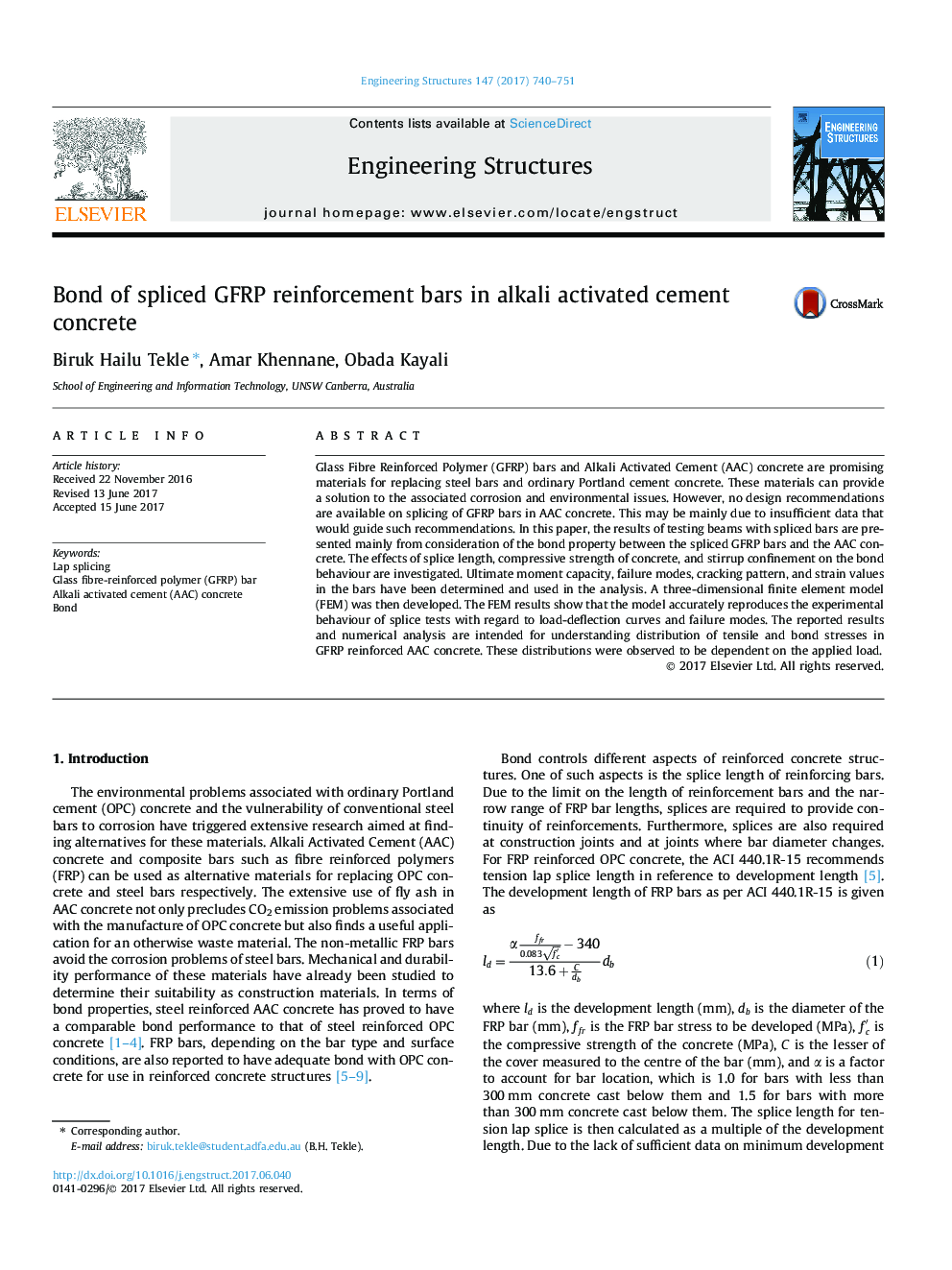| Article ID | Journal | Published Year | Pages | File Type |
|---|---|---|---|---|
| 4919944 | Engineering Structures | 2017 | 12 Pages |
Abstract
Glass Fibre Reinforced Polymer (GFRP) bars and Alkali Activated Cement (AAC) concrete are promising materials for replacing steel bars and ordinary Portland cement concrete. These materials can provide a solution to the associated corrosion and environmental issues. However, no design recommendations are available on splicing of GFRP bars in AAC concrete. This may be mainly due to insufficient data that would guide such recommendations. In this paper, the results of testing beams with spliced bars are presented mainly from consideration of the bond property between the spliced GFRP bars and the AAC concrete. The effects of splice length, compressive strength of concrete, and stirrup confinement on the bond behaviour are investigated. Ultimate moment capacity, failure modes, cracking pattern, and strain values in the bars have been determined and used in the analysis. A three-dimensional finite element model (FEM) was then developed. The FEM results show that the model accurately reproduces the experimental behaviour of splice tests with regard to load-deflection curves and failure modes. The reported results and numerical analysis are intended for understanding distribution of tensile and bond stresses in GFRP reinforced AAC concrete. These distributions were observed to be dependent on the applied load.
Keywords
Related Topics
Physical Sciences and Engineering
Earth and Planetary Sciences
Geotechnical Engineering and Engineering Geology
Authors
Biruk Hailu Tekle, Amar Khennane, Obada Kayali,
